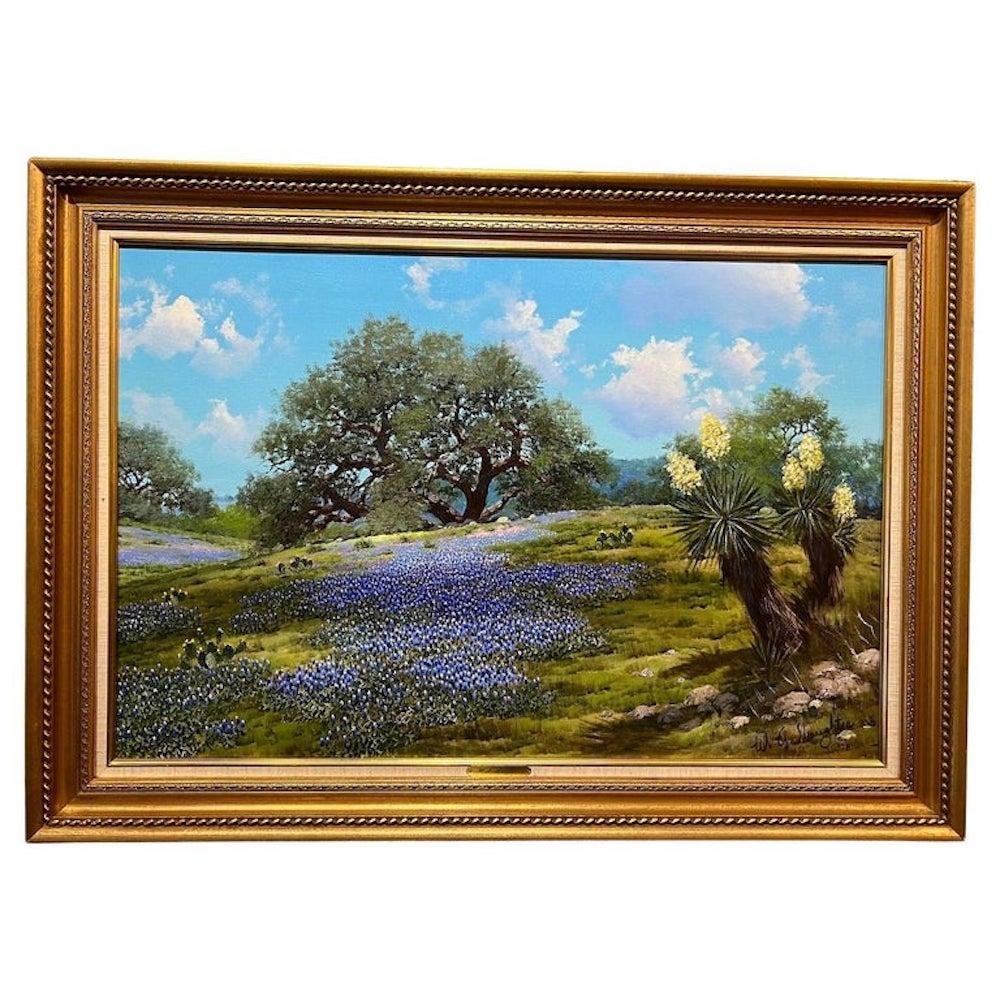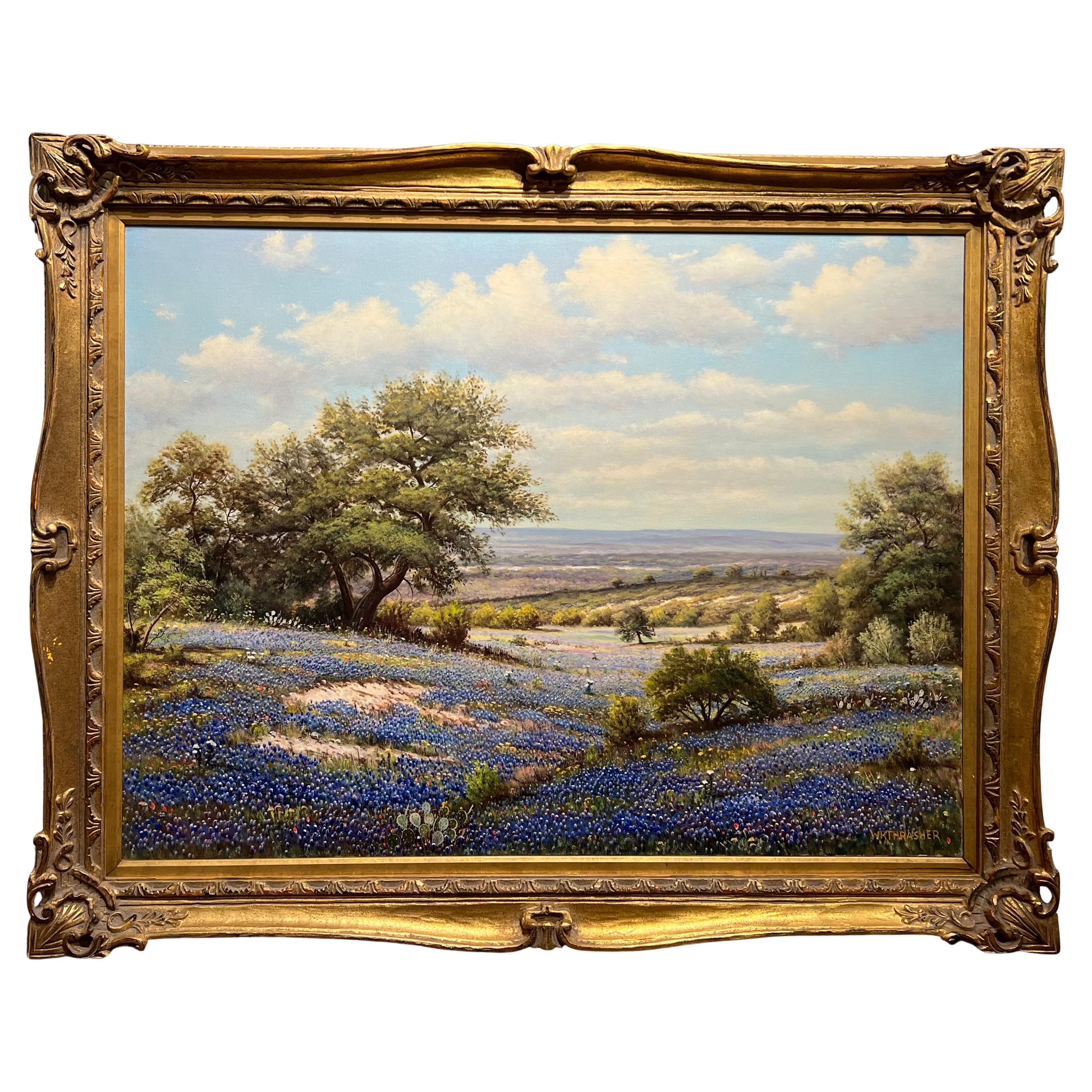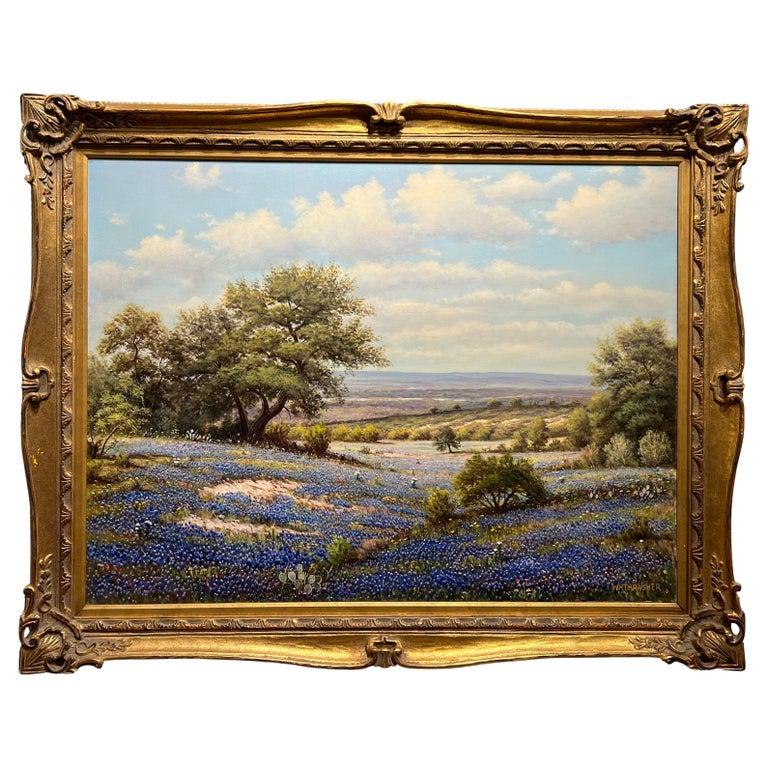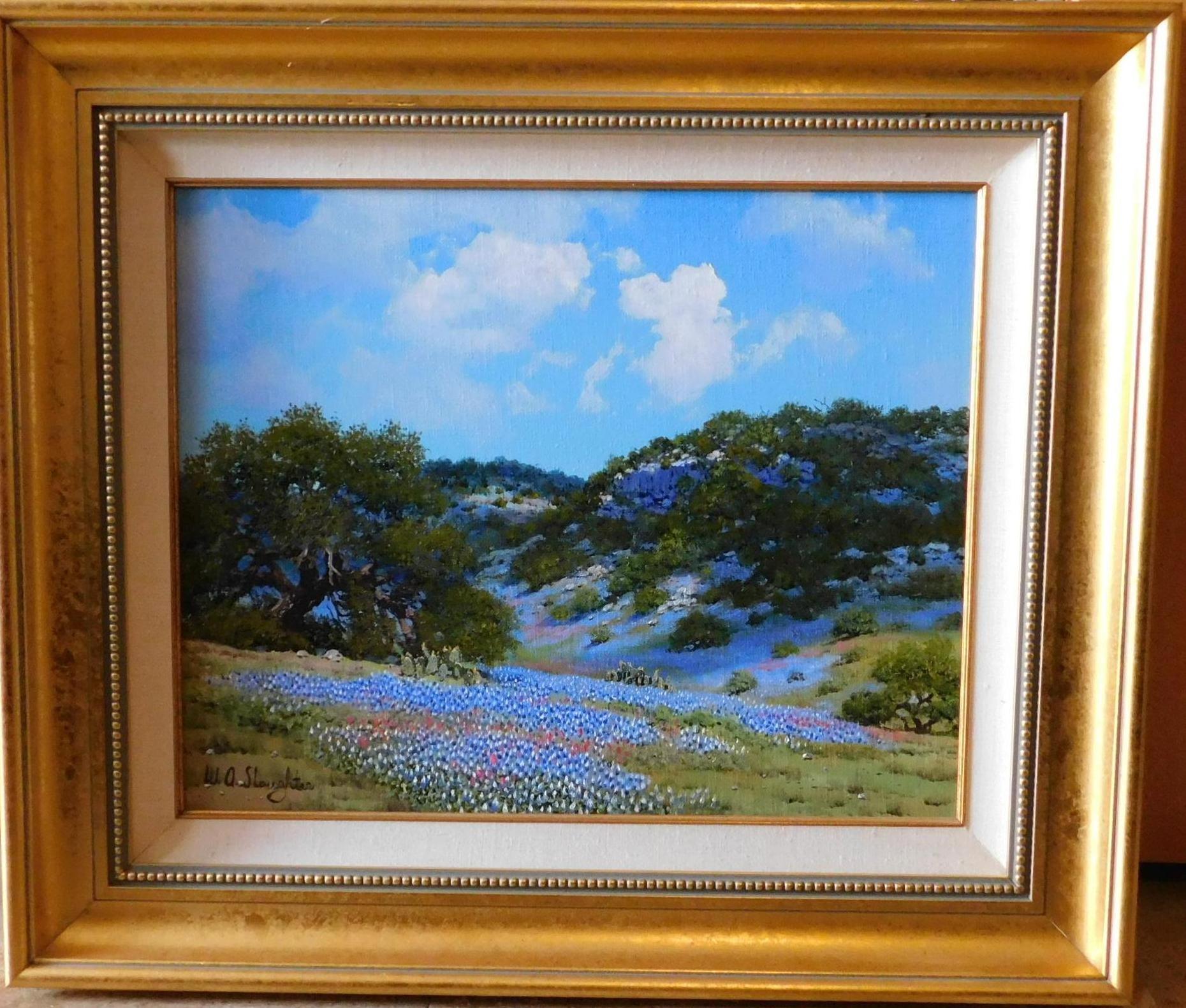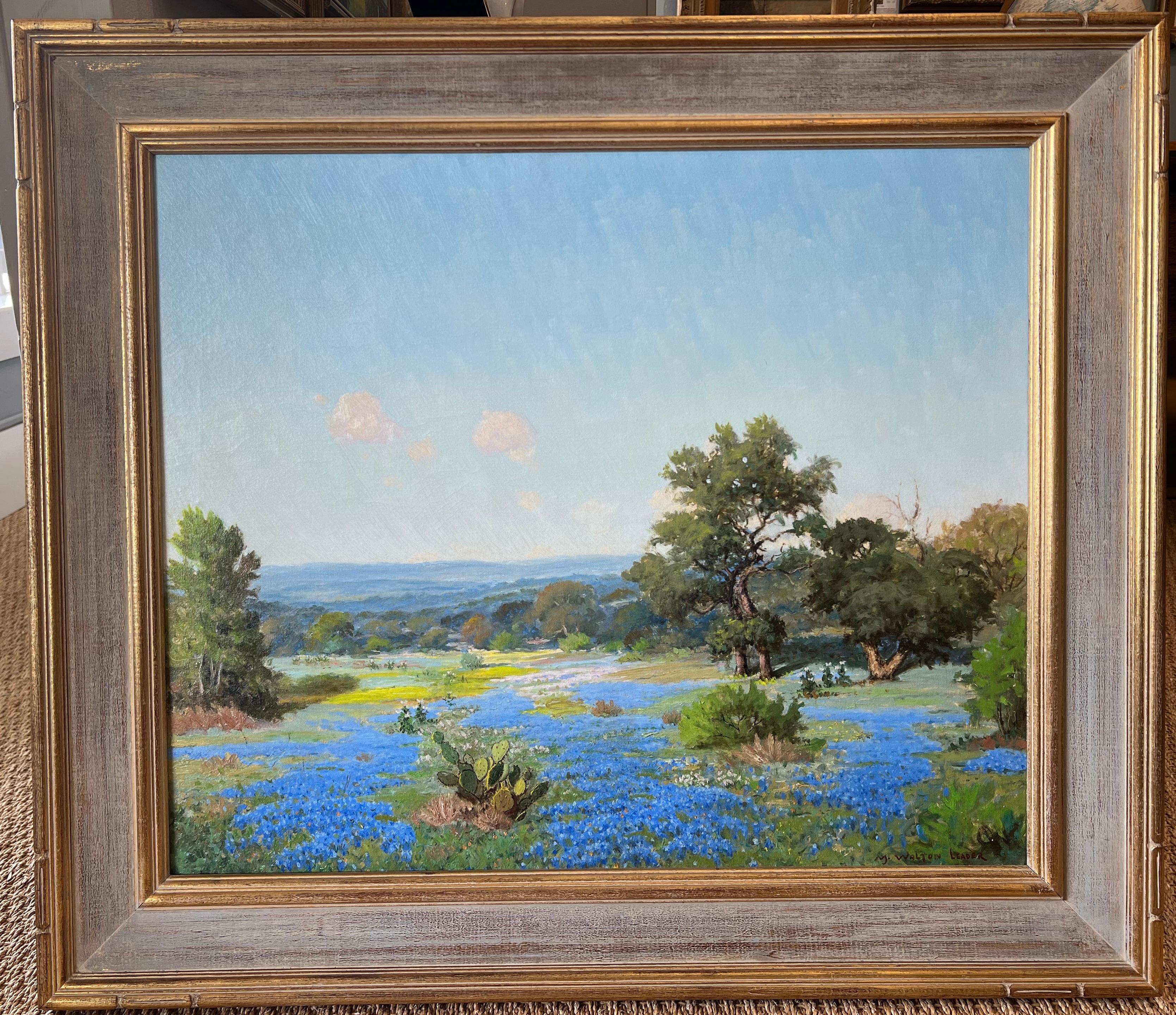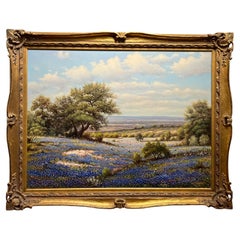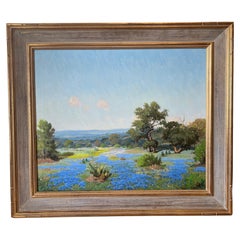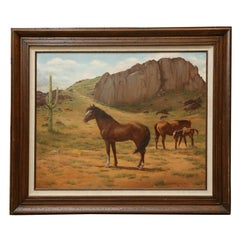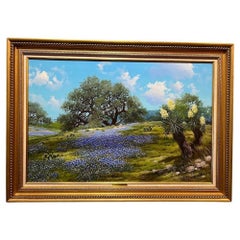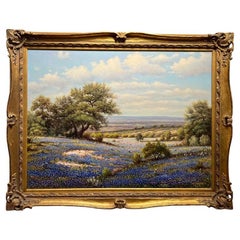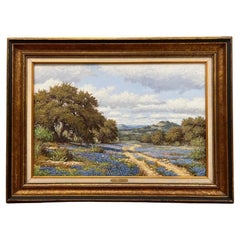Items Similar to Bluebonnets, Oak, and Yucca
Want more images or videos?
Request additional images or videos from the seller
1 of 7
Bluebonnets, Oak, and Yucca
$25,000
£18,984.52
€21,944.99
CA$35,135.12
A$39,122.92
CHF 20,689.12
MX$476,101.96
NOK 260,790.87
SEK 245,703.34
DKK 163,781.27
About the Item
Willian A. Slaughter (1923-2003)
William A. Slaughter was born in San Antonio, Texas, in 1923 and died in Dallas, Texas, in December 2003. His first call was to the ministry, and after serving in the Air Force during WWII, he was ordained as a Lutheran pastor. This calling took him first to Lubbock, Texas, then to Mexico, and finally to Dallas. It was during this ministry in Mexico that Mr. Slaughter began seriously to hear another call. His paintings were enormously popular with his parishioners, and before long, he had to decide between painting and the ministry.
Slaughter began painting and exhibiting at local art and craft shows after moving to Dallas. He belonged to and exhibited with the Artists and Craftsmen's Association of Dallas.
Slaughter was mostly self-taught and combined innate ability and persistence to create many Texas landscapes, seemingly everyone's favorite subject, in realist style. He also painted wildlife, women, children, and still lifes.
“Bluebonnets, Oak, and Yucca”, 1978
Oil on canvas, signed and dated lower right
23”h x 35”w, overall size is 30” x 42”
- Creator:William A. Slaughter (Artist)
- Dimensions:Height: 23 in (58.42 cm)Width: 35 in (88.9 cm)Depth: 2 in (5.08 cm)
- Style:Other (In the Style Of)
- Materials and Techniques:
- Place of Origin:
- Period:
- Date of Manufacture:1978
- Condition:
- Seller Location:Houston, TX
- Reference Number:1stDibs: LU1503245628222
About the Seller
5.0
Vetted Professional Seller
Every seller passes strict standards for authenticity and reliability
Established in 1971
1stDibs seller since 2015
217 sales on 1stDibs
Typical response time: <1 hour
- ShippingRetrieving quote...Shipping from: Houston, TX
- Return Policy
Authenticity Guarantee
In the unlikely event there’s an issue with an item’s authenticity, contact us within 1 year for a full refund. DetailsMoney-Back Guarantee
If your item is not as described, is damaged in transit, or does not arrive, contact us within 7 days for a full refund. Details24-Hour Cancellation
You have a 24-hour grace period in which to reconsider your purchase, with no questions asked.Vetted Professional Sellers
Our world-class sellers must adhere to strict standards for service and quality, maintaining the integrity of our listings.Price-Match Guarantee
If you find that a seller listed the same item for a lower price elsewhere, we’ll match it.Trusted Global Delivery
Our best-in-class carrier network provides specialized shipping options worldwide, including custom delivery.More From This Seller
View AllApril Bluebonnets
By William Robert Thrasher
Located in Houston, TX
William Robert Tharsher (1908-1997)
William Robert Thrasher, born in 1908 in Lamar County, Texas, was a dedicated artist known for his vivid depictions of the Texas landscape, wildli...
Category
Vintage 1970s American Other Paintings
Materials
Canvas
$14,500
Painting by Robert Harrison
Located in Houston, TX
US artist from San Antonio, TX. Very well represented in the multiple galleries and private collections.
“Bluebonnets Field” , late 20th century
Oil on canvas, signed lower left
...
Category
1990s American Other Paintings
Materials
Canvas
Painting by Morris Walton Leader (1877-1966)
By Morris Walton Leader
Located in Houston, TX
Morris Walton Leader (1877- 1966)
Morris Walton Leader was born in Marshall, Texas, in 1877. He died in Austin, Texas, where he had lived since he was a young boy. He studied with ...
Category
Vintage 1940s American Other Paintings
Materials
Canvas
Painting by Cunningham Patrick
By Patrick Cunningham
Located in Houston, TX
Texas artist Cunningham Patrick (1932-1989). Active in Houston. Represented by the Barbizon Gallery. "Wild Ones", circa 1970s. Measures: 24" x 30", oil o...
Category
Late 20th Century American Mid-Century Modern Paintings
Painting by W. R. Thrasher
Located in Houston, TX
W.R. Thrasher (1908-1997)
An American well listed painter, who specialized on painting of landscapes and country scenes.
Oil on canvas, signed ...
Category
Vintage 1970s American Other Paintings
Materials
Canvas
Painting by Robert Wood
Located in Houston, TX
Robert William Wood
(1889-1979)
Robert William Wood was an American landscape painter. He was born in England, emigrated to the United States and rose to prominence in the 1950s wi...
Category
Vintage 1940s American Other Paintings
Materials
Canvas
$9,500
You May Also Like
Bluebonnets, Oak, and Yucca
Located in Houston, TX
Willian A. Slaughter (1923-2003)
William A. Slaughter was born in San Antonio, Texas in 1923 and died in Dallas, Texas December 2003. His first call was to the ministry and after ser...
Category
1970s Realist Landscape Paintings
Materials
Canvas, Oil
April Bluebonnets
Located in Houston, TX
William Robert Thrasher (1908-1997)
William Robert Thrasher, born in 1908 in Lamar County, Texas, was a dedicated artist known for his vivid depictions of the Texas landscape, wildli...
Category
1970s Other Art Style Landscape Paintings
Materials
Oil
William A. Slaughter Texas Bluebonnet Painting, Circa 1970's
By William A. Slaughter
Located in Phoenix, AZ
Wonderful Bluebonnet subject oil on canvas by Texas artist William A. Slaughter (1923-2003). The work is in excellent condition and signed lower left.
Image 16"h x 19 ½” w. Frame 2...
Category
1970s Landscape Paintings
Materials
Canvas, Oil
Bluebonnets Field
By Robert Harrison
Located in Houston, TX
US artist from San Antonio, TX. Very well represented in the multiple galleries and private collections.
“Bluebonnets Field” , late 20th century
Oil on canvas, signed lower left
...
Category
1990s Other Art Style Landscape Paintings
Materials
Oil
Bluebonnets under Texas Sun
By Morris Walton Leader
Located in Houston, TX
Morris Walton Leader (1877- 1966)
Morris Walton Leader was born in Marshall, Texas, in 1877. He died in Austin, Texas, where he had lived since he was a young boy. He studied with ...
Category
1940s Other Art Style Landscape Paintings
Materials
Oil
"BANKS OF BLUE" TEXAS HILL COUNTRY BLUEBONNETS RIVER 40X50 FRAMED
Located in San Antonio, TX
W. A. Slaughter
(1923 - 2003)
Dallas / San Antonio Artist
Size: 30 x 40
Frame: 40 x 50
Medium: Oil on Canvas
Dated 1974
"Banks of Blue" Texas Bluebonnets
Biography
W. A. Slaughter (1...
Category
1970s Impressionist Landscape Paintings
Materials
Oil
